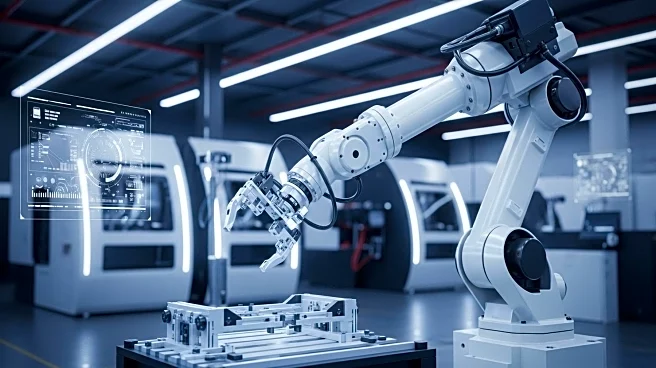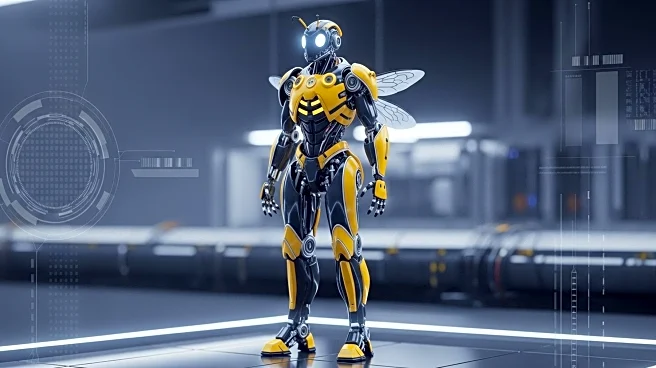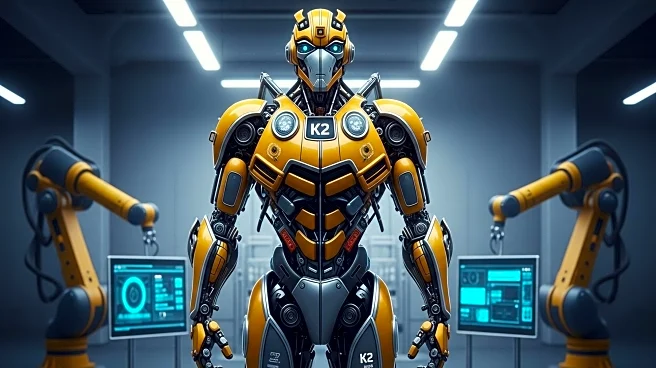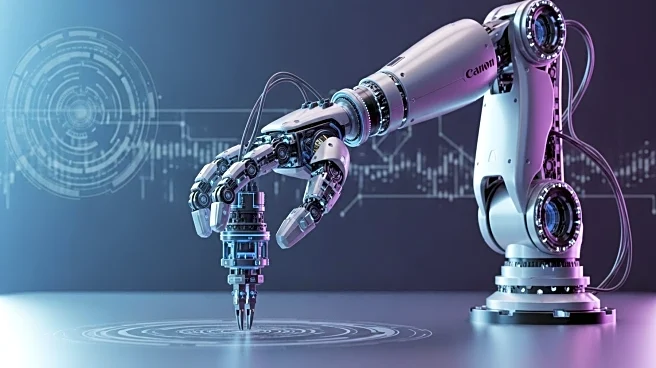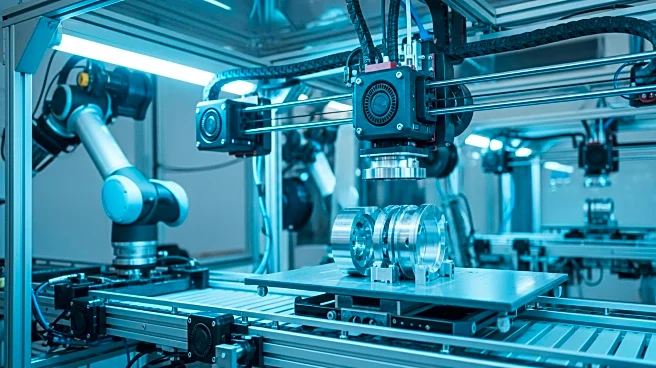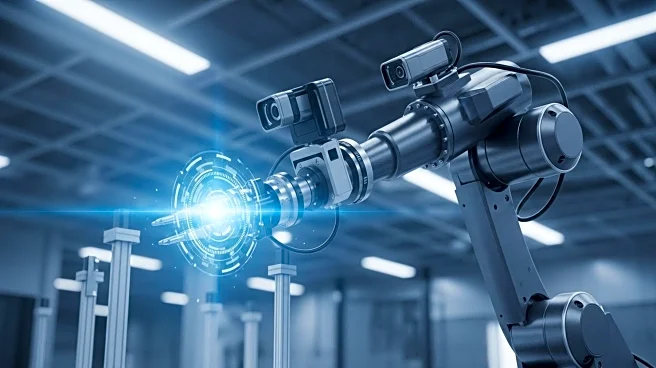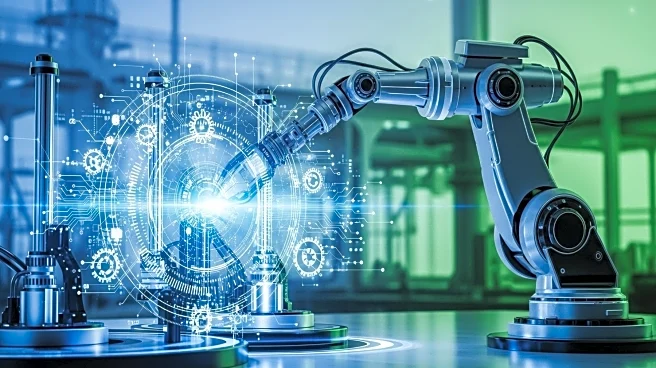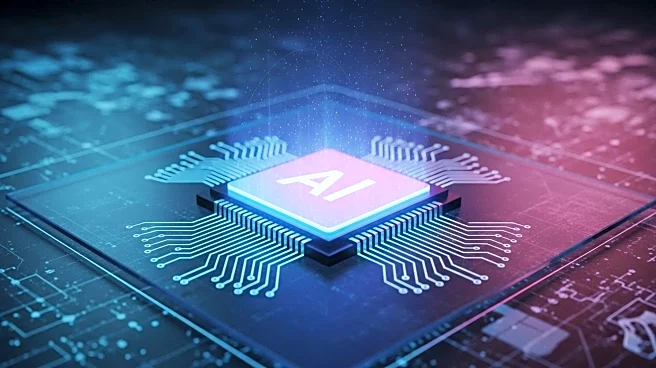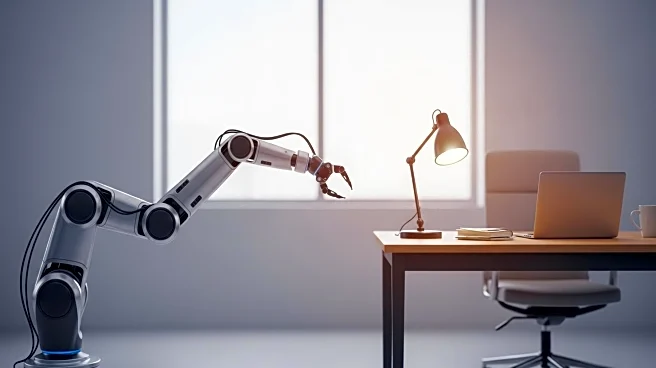What's Happening?
The manufacturing industry is increasingly relying on SCARA robots to address labor shortages and enhance operational efficiency. As digital manufacturing evolves, the need for flexible and advanced robotics becomes crucial. SCARA robots, known for their high-speed and repetitive application capabilities, are being integrated with Industry 4.0 technologies such as artificial intelligence and big data analytics. This integration aims to improve production line efficiency and reduce labor costs. According to the Deloitte Research Center for Energy & Industrials, the manufacturing sector faces a potential need for 3.8 million new workers between 2024 and 2033, with half of these positions potentially remaining unfilled due to skill gaps. The labor shortage has already cost the industry an estimated $1 trillion in revenue, affecting investments in cutting-edge technologies.
Why It's Important?
The adoption of SCARA robots is significant as it addresses the pressing issue of labor shortages in the manufacturing industry. By enhancing productivity and reducing reliance on human labor, these robots help mitigate the impact of rising labor costs and regulatory changes. Smaller manufacturers, who are particularly affected by these challenges, stand to benefit from the increased efficiency and reduced operational costs that SCARA robots offer. The flexibility of these robots allows manufacturers to adapt quickly to changing market demands, ensuring competitiveness in a rapidly evolving industry. As customer expectations continue to rise, the ability to maintain high levels of accuracy and speed becomes essential, making SCARA robots a vital component of modern digital manufacturing.
What's Next?
The global market for SCARA robots is projected to grow significantly, reaching an estimated $15.6 billion by 2032. This growth is driven by the demand for faster turnaround times and improved quality control. Manufacturers are likely to continue investing in SCARA technology to maintain competitiveness and meet evolving customer expectations. Decision-makers in the industry will need to conduct cost-benefit analyses to determine the best time to upgrade their systems, balancing the risks of waiting for newer technologies against the potential loss of market share to early adopters.
Beyond the Headlines
The integration of SCARA robots into digital manufacturing represents a broader shift towards automation and technological modernization. This shift has ethical and cultural implications, as it changes the nature of work and the skills required in the manufacturing sector. As automation becomes more prevalent, there may be increased pressure on educational institutions to adapt curricula to prepare the workforce for new technological demands. Additionally, the reliance on robotics raises questions about job displacement and the future role of human workers in manufacturing.

